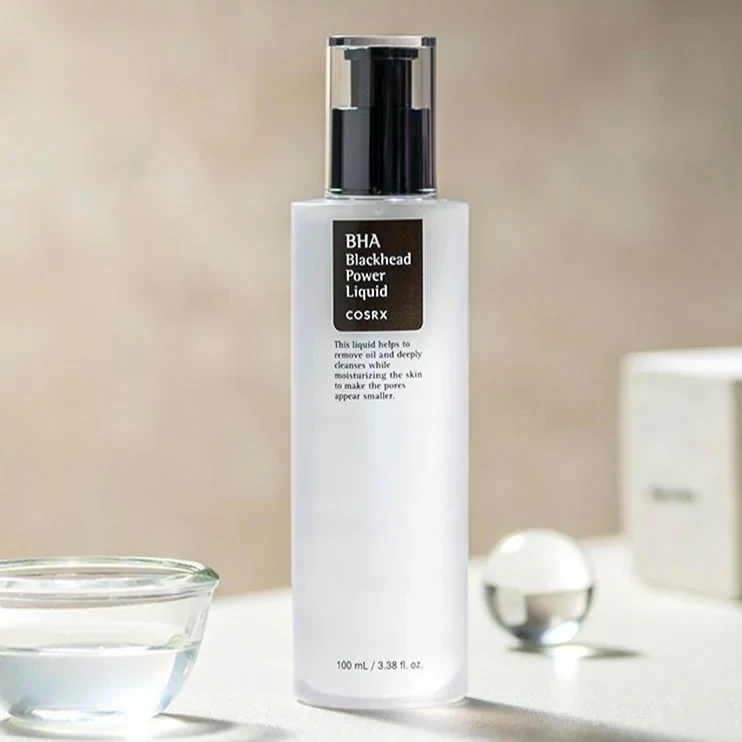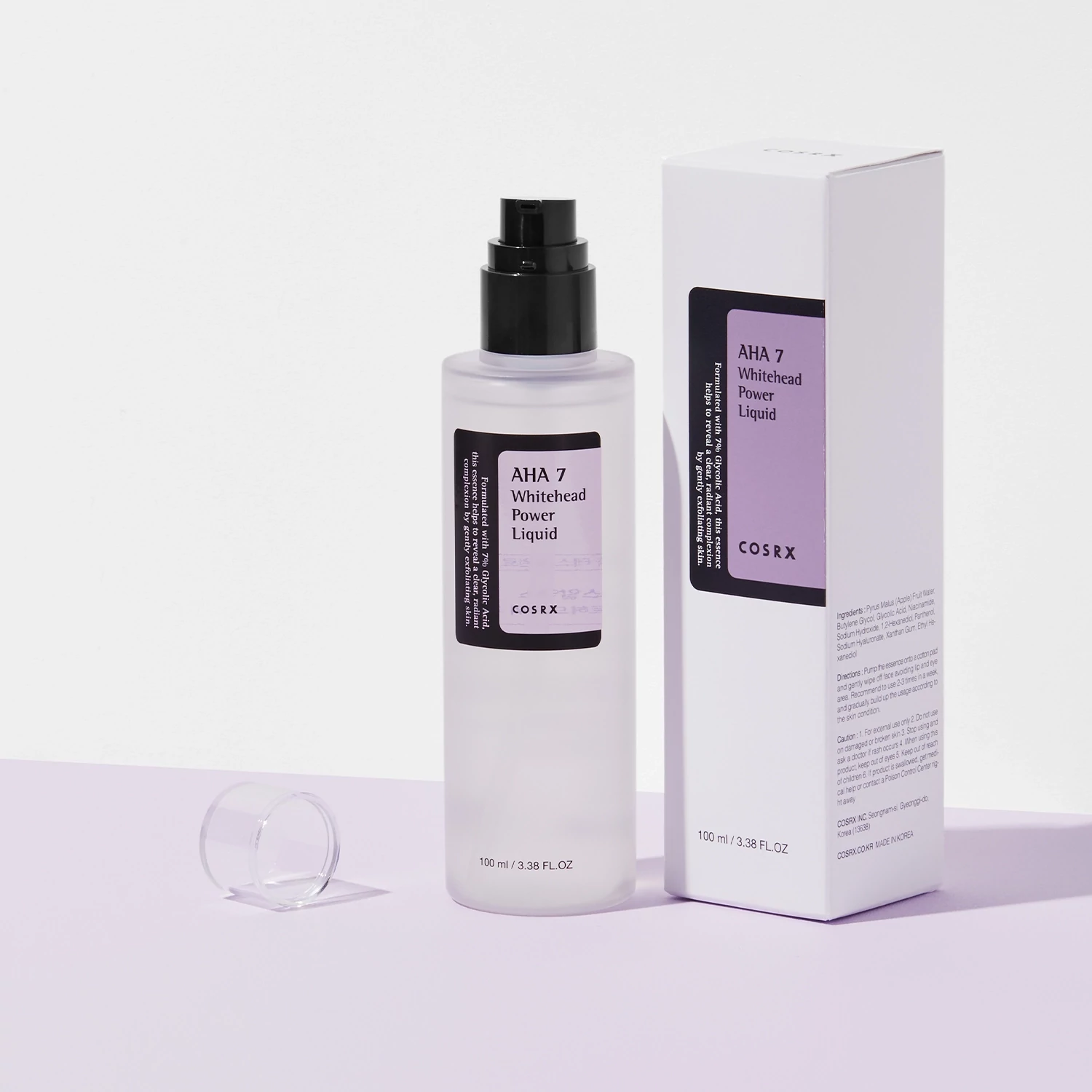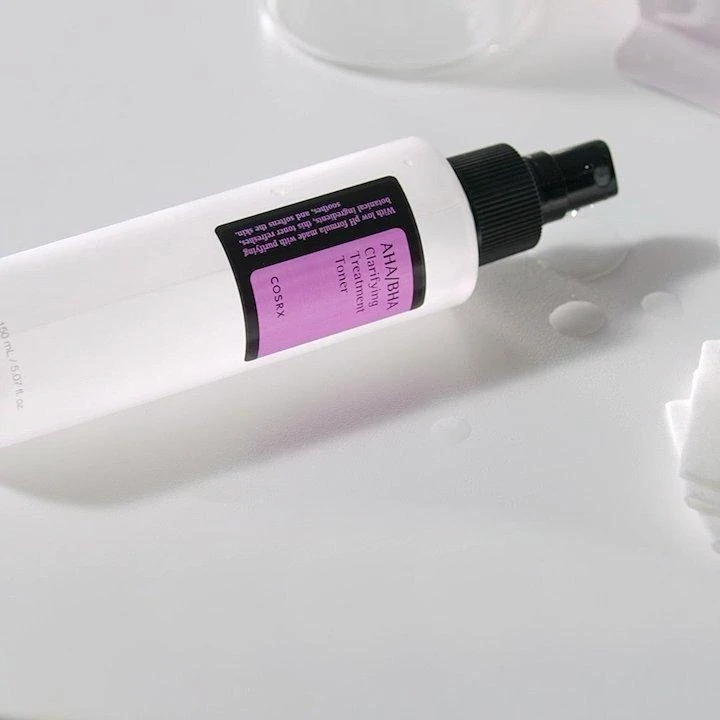Types of Exfoliants and Their Effects on Skin
Exfoliants are cosmetic products that help remove dead skin cells, promoting skin renewal. With regular use of exfoliants, skin can become smoother, fresher, and healthier looking. Why should you use exfoliants?
Chemical Exfoliants
Chemical exfoliants remove dead skin layers using acids. There are two main types:
- AHA (Alpha Hydroxy Acid): Water-soluble acids such as glycolic acid and lactic acid. Ideal for dry and mature skin, as they help increase skin hydration and radiance.
- BHA (Beta Hydroxy Acid): Oil-soluble acids such as salicylic acid. Specifically recommended for oily and acne-prone skin, as they deeply cleanse pores, reducing skin oiliness.
There are other types of exfoliants available on the market, such as PHA, but in this article, we will look at the 2 most common types.
BHA (Beta Hydroxy Acid):
BHA acid, also known as beta hydroxy acid, is an increasingly popular ingredient in the world of skincare, especially among those with oily, acne-prone, and sensitive skin. Salicylic acid mainly belongs to this category, which has excellent properties for cleansing the skin and clearing pores. In this article, we'll explain what exactly BHA acid is, how you can use it, and what tips to consider when starting to use it.
What is BHA acid, and how does it work?
BHA acid, or beta hydroxy acid, is an oil-soluble acid, which means it penetrates deeper into the pores. This is especially useful for oily and acne-prone skin, as it effectively dissolves oil and impurities in the pores, thereby reducing the formation of pimples and blackheads. One of the most well-known types of BHA acid is salicylic acid, which not only cleanses but also has anti-inflammatory effects.
How to use BHA acid?
-
Cleansing: Always cleanse your face with a mild cleanser before using BHA. Clean skin enhances the effectiveness of the acid.
-
BHA Application: Depending on the form of the product, BHA can be applied as a tonic or serum. Apply a small amount to a cotton pad or your clean hands, then gently spread it on your face. You can pay special attention to problem areas, such as the T-zone or around the nose.
-
Waiting: After applying BHA, wait at least 2-5 minutes for it to be properly absorbed before layering other products on top. This period helps BHA penetrate deeper and increase its effectiveness.
-
Hydration: It's an important step to properly hydrate the skin, as BHA acid can sometimes have a drying effect. Choose a light but nourishing moisturizer that helps maintain the skin's moisture content.
-
Using sunscreen during the day: BHA acid can increase the skin's sensitivity to sunlight, so always use at least SPF 50 sunscreen during the day if you have applied BHA to your face.
How to start using BHA acid?
If you're new to using BHA, start carefully. Here are some useful tips:
-
Start with 1-2 times a week: At the beginning, it's enough to use it 1-2 times a week for the skin to get used to it. Watch how your skin reacts, and you can gradually increase the frequency to 3-4 times a week.
-
Start with a lower concentration: Most BHA products are available in 0.5% to 2% concentrations. Those with sensitive skin can start with a lower percentage and increase it if the skin responds well.
-
Avoid using with other strong ingredients: For example, using it together with retinoids and AHAs can cause irritation, especially if your skin is not yet used to BHA.
Who is BHA acid recommended for?
BHA is particularly beneficial for the following skin types:
-
Oily skin: BHA is oil-soluble, so it effectively dissolves excess sebum in the pores.
-
Acne-prone skin: Due to the antibacterial and anti-inflammatory properties of salicylic acid, it can help reduce the appearance of acne.
-
Sensitive skin: Since BHA is a milder exfoliant than AHA acids, it is often recommended for those with sensitive skin, but in small amounts and gradually introduced.
Benefits achievable with BHA use
-
Clean and smooth skin surface: Helps remove dead skin cells, resulting in smoother and cleaner skin.
-
Pore cleansing: Effectively cleans pores, reducing the formation of blackheads and pimples.
-
Anti-inflammatory: Can reduce skin redness and inflammation, making it particularly recommended for acne-prone, problematic skin.
AHA (Alpha Hydroxy Acid):
AHA acids, or alpha hydroxy acids, are chemical exfoliants that help improve skin texture and tone. AHA is particularly popular for treating dull, dry, or pigmented skin because it helps remove dead skin cells and stimulates cell renewal. In this article, we'll detail how AHA acids work, how to use them, and tips for getting started.
What exactly is AHA acid, and how does it work?
AHA acids are water-soluble compounds that work in the upper layer of the skin. Natural acids derived from fruits, lactic acid, and sugar cane that exfoliate the skin surface, helping skin renewal. The most common types of AHAs include glycolic acid, lactic acid, mandelic acid, and citric acid. AHA acids are particularly effective for dry, sun-damaged, and pigmented skin, as they promote the shedding of dead skin cells, resulting in fresh, radiant skin.
How to use AHA acid?
-
Cleansing: Use a gentle facial cleanser to prepare the skin for exfoliation.
-
AHA Application: You'll typically find AHA in the form of a tonic, serum, or mask. Apply it to the skin using a cotton pad, or dispense into your hand and gently spread it on your face. Be careful with sensitive areas, such as around the eyes and nose, to avoid irritating the skin.
-
Waiting: After applying AHA acid, allow it to absorb for 5-10 minutes before applying additional products. During this time, the acid properly absorbs and begins to work.
-
Hydration: Always moisturize after using AHA acid, as the skin loses moisture. Choose a rich moisturizer to maintain the skin's hydration and elasticity.
-
Using sunscreen during the day: AHA acid makes the skin more sensitive to sunlight, so always use sunscreen (at least SPF 50) during the day if you apply AHA.
How to get started with using AHA acid?
It's recommended to gradually accustom the skin to AHA acid:
-
Start with 1-2 times a week: Initially, it's enough to apply it 1-2 times a week for the skin to get used to the acid. When your skin becomes accustomed, you can increase the frequency to 3-4 times a week.
-
Start with a low concentration: AHA acids are available in various concentrations, from 5% to 30%. For those with sensitive skin, it's recommended to start with a lower concentration and gradually increase if the skin responds well.
-
Avoid mixing with other acids and retinoids: It's advisable to use AHA separately from other strong ingredients, such as BHA or retinoids, to avoid skin irritation.
Who is AHA acid recommended for?
AHA is particularly beneficial for the following skin types and issues:
-
Dry and dull skin: AHA has hydrating properties, helping to maintain the skin's moisture and revitalize dry, lifeless skin.
-
Pigmentation and uneven skin tone: AHA acids contribute to fading pigmentation spots and evening out skin tone.
-
Wrinkles and fine lines: Regular use of AHA promotes collagen production, which can improve skin firmness and smooth out fine lines.
Benefits achievable with AHA use
-
Radiant skin surface: By removing dead skin cells, AHA refreshes the skin and makes it radiant.
-
Uniform skin tone: Regular use of AHA acid improves skin texture and fades pigmentation spots.
-
Collagen stimulation: By promoting skin cell renewal, AHA increases skin elasticity and firmness.
Physical Exfoliants
Physical exfoliants remove dead skin cells mechanically, through rubbing. These include scrubs and exfoliating sponges. However, no matter how gentle they are, they can cause micro-injuries to the skin, so it's worth replacing them.
Enzymatic Exfoliants
Enzyme exfoliants contain plant enzymes such as papain and bromelain. These natural enzymes exfoliate gently, making them ideal for those with sensitive skin.
Why is it worth exfoliating regularly?
Exfoliation helps remove dead skin cells, making the skin clean, fresh, and smooth. Additionally, the skin more easily absorbs skincare products, enhances skin radiance and evenness. Regular exfoliation can contribute to keeping pores clean, fading pigmentation spots, and improving skin texture.
Recommended Exfoliating Products



